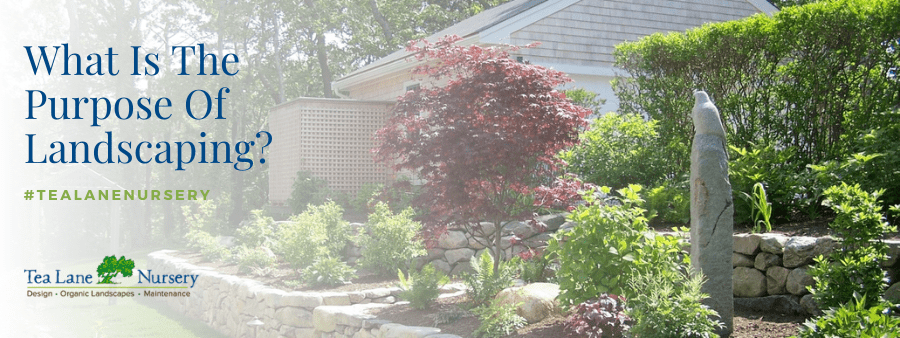Hilton Head Landscapes Things To Know Before You Get This
Hilton Head Landscapes Things To Know Before You Get This
Blog Article
Hilton Head Landscapes Fundamentals Explained
Table of ContentsLittle Known Facts About Hilton Head Landscapes.Some Known Details About Hilton Head Landscapes The Facts About Hilton Head Landscapes UncoveredGetting The Hilton Head Landscapes To WorkNot known Facts About Hilton Head LandscapesHilton Head Landscapes - TruthsThe Buzz on Hilton Head Landscapes
Line creates all kinds and patterns and can be used in a selection of methods the landscape. Line in the landscape is created by the side in between two products, the rundown or silhouette of a kind, or a long linear attribute. Lines are a powerful tool for the developer since they can be used to create a limitless variety of forms and forms, and they regulate movement of the eye and the body.

Lines can have one or even more qualities, such as those described below, yet they normally serve various functions. Figure 1. Lines in the landscape - landscape design hilton head. The homes of lines determine exactly how people react to the landscape, both psychologically and physically. Straight lines are structural and strong; they develop an official character, are usually connected with an in proportion layout, and lead the eye directly to a centerpiece.
The Basic Principles Of Hilton Head Landscapes
Bent lines develop a casual, all-natural, kicked back personality that is connected extra with nature and unbalanced equilibrium. Curved lines move the eye at a slower rate and include mystery to the area by producing hidden sights.
Upright lines in the landscape include high, slim plant material, such as trees, or tall frameworks, such as an arbor or a bird home on a post. Horizontal lines move the eye along the ground airplane and can make a room feel larger. Low lines are much more controlled and create a feeling of rest or repose.
The Hilton Head Landscapes Diaries
Low lines are produced by low garden wall surfaces, sidewalks, and brief bushes. Lines are utilized to draw forms on a plan. In plan sight, they define plant beds and hardscape locations. Lines are also developed by the vertical types of built functions and plant product. There are three key line types that develop form in the landscape: bedlines, hardscape lines, and plant lines.
Bedlines link plant material to your home and hardscape since the eye follows the line, moving the stare via the landscape. Hardscape lines are developed by the side of the hardscape, which marks the built structure. Line can additionally be produced by long and slim products, such as a fence or wall.
6 Simple Techniques For Hilton Head Landscapes
Type is located in both hardscape and plants, and it is typically the leading aesthetic component that spatially arranges the landscape and often figures out the style of the garden. The form of frameworks, plant beds, and garden ornaments likewise identifies the general type style of the garden. Formal, geometric forms include circles, squares, and polygons.
Plants produce kind in the yard through their outlines or silhouettes, but type can additionally be specified by a void or negative room in between plants - Landscaping bluffton sc (https://pxhere.com/en/photographer/4299392). Circles can be full circles, or they can be divided right into fifty percent circles or circle sectors and incorporated with lines to develop arcs and tangents
Some Ideas on Hilton Head Landscapes You Should Know
Circles can also be extended into ovals and ellipses for even more variety and interest. Circles are a solid style form due to the fact that the eye is always drawn to the facility, which can be utilized to highlight a centerpiece or connect various other types. Number 2. Circular types in hardscape and lawn panels.
The square form can likewise be segmented and previously owned consistently to produce a grid pattern. Unlike circles, squares are more powerful on the sides, which can be lined up or overlapped to create distinct patterns and more complicated kinds.
Meandering lines commonly mimic the all-natural training course of rivers or streams and can be called smooth lines with deeply curved wavinesses. Twisting lines (Figure 3) work well for pathways, plant bedlines, and dry stream beds. Twisting lines can add rate of interest and secret to a yard by leading viewers around edges to uncover brand-new sights and rooms.
Some Ideas on Hilton Head Landscapes You Need To Know

Number 5. Fragmented sides: tipping rocks in path. Type is the most enduring top quality of a plant (Landscaping bluffton sc). https://filesharingtalk.com/members/598268-h1tnhdlndscps. Common plant forms are well established and standard, as type is the most regular and well-known feature of plants. Type can also be developed with the massing of plants, where the general mass creates a various form than a specific plant.
A highly different form has to be utilized with careone or 2 work well as a prime focus, yet a lot of wreak havoc. All-natural plant types, instead of over-trimmed types, need to develop the bulk of the make-up. The significance of overall type is much more or much less depending on the checking out perspectivethe form of a tree can appear fairly different to an individual standing under the cover versus viewing the tree from a range in an open field.
All about Hilton Head Landscapes
Plant types additionally develop bluffton landscaping and specify deep space or open rooms in between the plants, creating either convex or concave forms in deep spaces. High-arching tree branches normally develop a concave open area under the branches, and a rounded cover with reduced branches fills the room to produce a convex form outdoors area under the tree.
Report this page